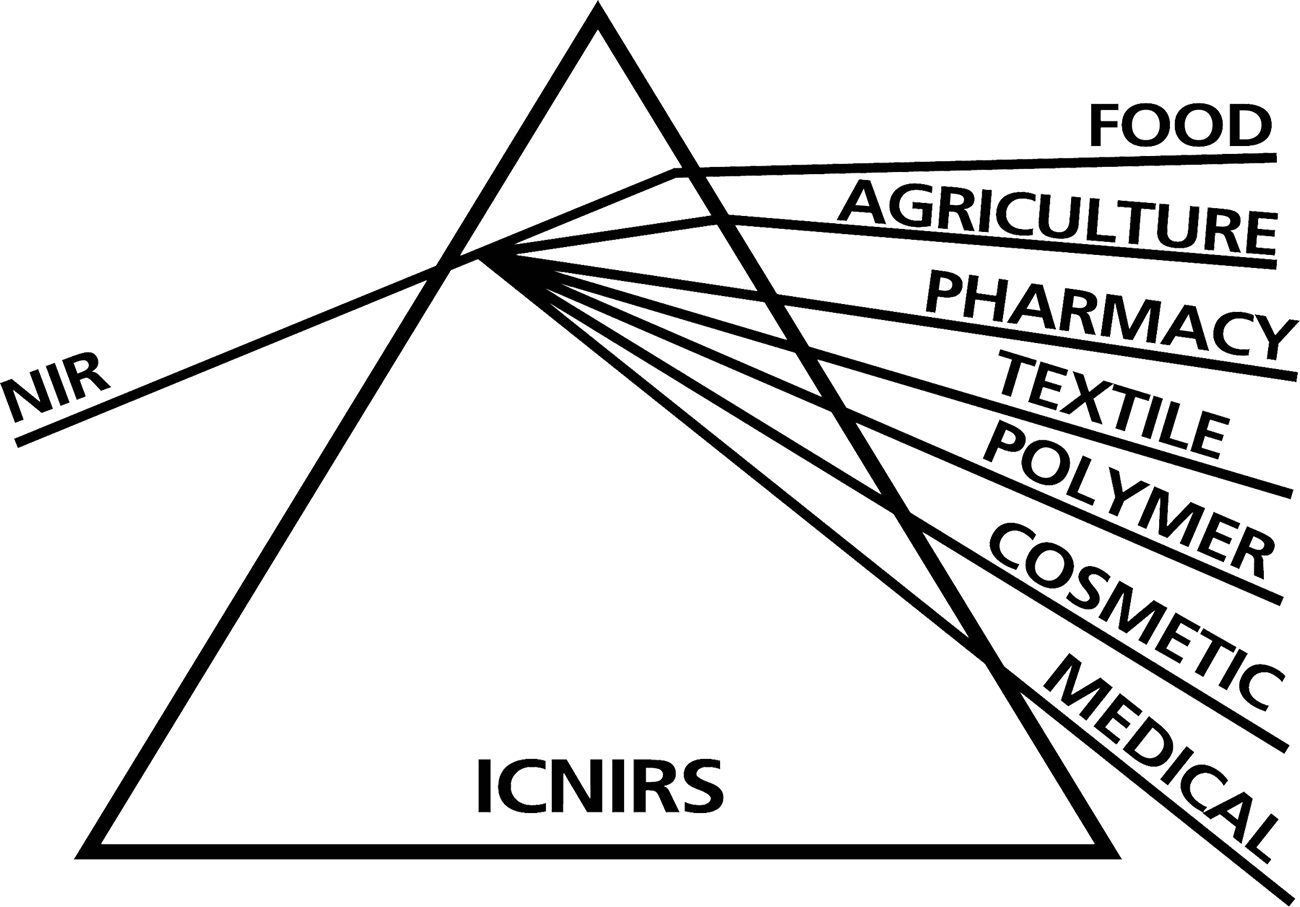The previous winners of the Hirschfeld Award are as follows:
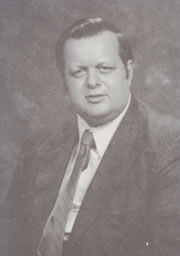
- 1990 Charles Miller, USA
- 1991 Arnold Eilert, USA
- 1992 Bob Windham, USA
- 1993 Brian Osborne, UK
- 1994 Fred McClure, USA
- 1995 Matsuo Iwamoto, Japan
- 1996 Harvey Gold, USA
- 1997 Tomas Isaksson and Tormod Naes, Norway
- 1998 Yukihiro Ozaki, Japan
- 1999 Ian Murray, UK
- 2000 Heinz Siesler, Germany
- 2001 Tom Fearn, UK
- 2002 Pierre Dardenne, Belgium
- 2003 Woody Barton, USA
- 2004 Graeme Batten, Australia.
- 2005 Ana Garrido-Varo, Spain
- 2006 Roumiana Tsenkova, Japan
- 2007 Gerard Downey, Ireland
- 2008 Véronique Bellon-Maurel, France
- 2009 Sumio Kawano, Japan
- 2010 Jim Reeves, USA
- 2011 Marcelo Blanco Romia, Spain
- 2012 David Burns, USA
- 2013 Daniel Cozzolino, Australia
- 2014 Dolores Pérez-Marín, Spain
- 2015 Soren Balling-Engelsen, Denmark
- 2016 Jean-Michel Roger, France
- 2017 Satoru Tsuchikawa, Japan
- 2018 Christian Huck, Austria
- 2019 Jose Manuel Amigo Rubio, Denmark
- 2021 Vincent Baeten, Belgium
- 2022 Wouter Saeys, Belgium
- 2023 Roger Meder, Australia
- 2025 Marena Manley, South Africa
2025 Tomas Hirschfeld Award
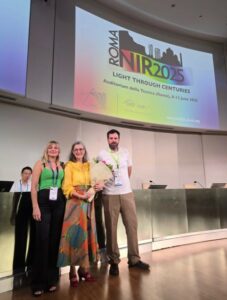
Marena Manley has been a full professor at the Department of Food Science, Stellenbosch University, since 2010. Her academic career started at the University in 1997 after completing her PhD at Plymouth University in 1995 and 18 months at the NIR instrument manufacturing company, Foss Electric in the United Kingdom. Marena initiated and implemented research using and applying near-infrared (NIR) spectroscopy in research at Stellenbosch University. This was followed by the introduction of NIR hyperspectral imaging research in the mid-2000s. Her research underscored the value of NIR hyperspectral imaging in providing both compositional and spatial information, enabling detailed characterisation of heterogeneous cereal samples. Her research group was one of the firsts to perform such work to publish cereal-related NIR hyperspectral imaging investigations internationally.
Marena has successfully supervised 77 postgraduate students (57 MSc, 19 PhD and 1 DSc) and 5 postdoctoral fellows. She published 135 peer-reviewed papers and contributed to 9 book chapters. She presented at over 160 national and international conferences, including 27 invited lectures. In 2019 she collaborated with Phil Williams to publish his ‘Near-Infrared Technology: Getting the Best out of Light’ training course material as a book. Her NIR spectroscopy and hyperspectral imaging research still focuses mainly on grain but has more recently extended to also include honey adulteration, sourdough maintenance, chocolate refining and tempering and gummy candy investigations. She finds the use ANOVA-simultaneous component analysis to interpret the effect of controlled factors on spectral data, in full-factorial experimental designs, valuable in these investigations.
Her research efforts positioned Stellenbosch University as a leading centre for NIR research in Africa. She currently has an H-index of 39 (Scopus) and 47 (Google). She played a leading role in the establishment of the Vibrational Spectroscopy Unit (by obtaining funding to the value of 7.99 mil ZAR) at SU in 2018, comprising conventional and hand-held NIR instruments and vis-NIR and SWIR hyperspectral imaging equipment; the only such facility in Africa.
She received the Medal of Honour of the Faculty of Natural Sciences and Technology (2014) awarded by the South African Academy of Science and Arts for her contribution to the advancement in her research field as well as an Excellence Award for her NIR spectroscopy-based grain research in South Africa (2010). In December 2022, Marena was awarded a Chancellor’s Award at Stellenbosch University in recognition for her role as educator and research excellence – specifically for contributing to the advancement of NIR spectroscopy and hyperspectral imaging in South Africa and further afield. Since 2023 she serves on the Board and Executive Committee of the South African Academy of Science and Arts.
Marena contributed to the NIR spectroscopy community by serving on the ICNIRS Chairman’s Advisory Committee (2001-2005), the Executive committee: Honorary Secretary (2005-2013) and Chair-elect (2013-2015). She was the Conference Chair of the 15th ICNIRS Conference (2011), Cape Town, SA and is currently the Conference Chair of the 22nd International Diffuse Reflectance Conference (IDRC) to be held in Knoxville Tennessee, USA in August 2026.
2023 Tomas Hirschfeld Award

Professor Roger Meder is a New Zealand chemist and physicist with specific expertise in both NMR and NIR spectroscopy and imaging, particularly with application to wood and agricultural products. He graduated with a BSc and MSc in chemistry from Otago University in New Zealand, and completed his PhD with Prof Sir Paul Callaghan FRS at Massey University in the field of physics, specifically magnetic resonance imaging and spectroscopy. Roger was introduced to NIR spectroscopy and chemometrics while working at the New Zealand Forest research Institute by Robert Meglen from NREL, USA in 1993 – so has now been working in the field for 30 years. He first started using IR, NIR and NMR spectra to predict wood quality in order to provide rapid non-destructive measurement of end-use performance.
Upon moving to Australia in 2001, worked at the Commonwealth Scientific and Industrial Research Organisation (CSIRO) where he was the Group Leader of the Forest Genetics, Genomics and Phenomics group. After leaving CSIRO he worked as an independent consultant (Meder Consulting) in the broader forestry and agricultural sector and as an Adjunct Professor in the Forest Research Institute at the University of the Sunshine Coast.
Since 2021 he has been working at Ridley Agriproducts in Australia where he leads their laboratory and analytical services. A major focus of this role is to expand a distributed NIR network across 18 feed mills to test raw materials and finished products in the livestock and fish feed sector.
He is the current Editor-in-Chief of the Journal of Near Infrared Spectroscopy and chair of the Australian NIR Spectroscopy Group (ANISG). He is a past member of the ICNIRS committee and was Chair of the organising committee for NIR-2019 in Australia.
2022 Tomas Hirschfeld Award
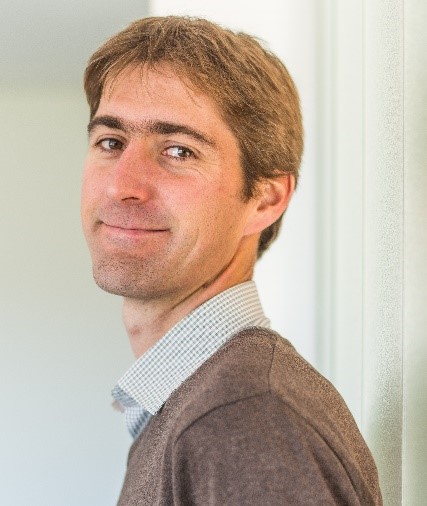
Wouter Saeys obtained his Master’s degree in Bioscience Engineering: option Agricultural Engineering from KU Leuven, in 2002. On the basis of his Master’s thesis on plant distance control for precision agriculture applications, he was awarded the engineering prize by the Royal Flemish Society of Engineers (KVIV). In 2006, he obtained a PhD in Bioscience Engineering from KU Leuven under the supervision of Professors Herman Ramon and Josse De Baerdemaeker for his research on precision fertilization with animal manure using NIRS for on-line manure composition measurement. As a postdoctoral fellow of the Flemish Research Foundation (FWO-Vlaanderen), he specialised in light transport modelling during a six month stay at the School for Chemical Engineering and Advanced Materials of the University of Newcastle upon Tyne, UK, under the supervision of Dr. Suresh Thennadil, and in Chemometrics during a six month stay at the Norwegian Food Research Institute – Matforsk, Norway, under the supervision of Dr. Tormod Naes. In 2010, he was appointed as assistant research professor at the KU Leuven Department of Biosystems, where he leads the Biophotonics group (www.biophotonics.be) with a focus on applications in the AgroFood chain and is responsible for the Master in Biosystems Engineering. His main research interests include light transport modelling and optical characterisation of biological materials, chemometrics and digital agriculture. In 2013, he was awarded by the European Network of Business and Industrial Statistics (ENBIS) with the ‘Young Statistician Award’ for his work on multivariate calibration of spectroscopic sensors in the agrofood industry. Since 2019, he is professor in the KU Leuven Department of Biosystems and in 2022 he has been rewarded by the Special Research Fund (BOF) with a 3rd term of 5 years as Research Professor. He is member of the editorial boards of the Journal of Near Infrared Spectroscopy and Biosystems Engineering and of the Chairman Advisory Committee and the Education Committee of the International Council of Near Infrared Spectroscopy (ICNIRS). He has supervised 29 PhDs, is (co-)author of 190+ peer reviewed journal articles (ISI), and has an h-index of 41 (ISI).
2021 Tomas Hirschfeld Award
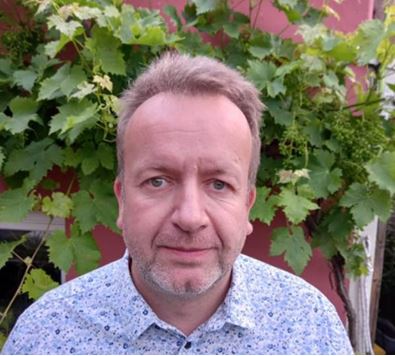
Dr Ir Vincent Baeten obtained his Engineering degree in Agronomy (1993) and PhD (1998) in Agricultural Sciences at the Catholic University of Louvain (UCLouvain, Louvain-la-Neuve, Belgium) and started his NIR career as ERASMUS student at the University of Cordoba. He has been awarded a Marie-Curie Fellowship (1996-1998) at the Instituto de la Grasa of the CSIC (Spain) (under the supervision of Dr Ramón Aparicio and Dr Marc Meurens). During more than 20 years he has worked at the Walloon Agricultural Research Centre (CRA-W, Belgium) in the team of Dr Pierre Dardenne.
Today, Vincent Baeten is Scientific Director of the Quality and Authentication of Products Unit at CRA-W (QAP Unit). Since 2013, he is also invited professor at UCLouvain and teaches application of spectroscopy and sampling to food analysis. Vincent Baeten was awarded the 2011-Q-Interline Sampling Award for the contribution in sampling applied to spectroscopy methods. In 2012-2013, he was awarded by the Brazilian Program Ciência sem fronteiras as Pezquisador visitante especial at University Federal of Para (UFPA, Belem, Brazil). During this stage, he contributes to the creation of the NIR laboratory in the CVACBA laboratory from UFPA. Vincent Baeten has about 25 years of experience in European projects dealing with the development of spectroscopic methods. He has participated or participates in several European and International projects dealing with quality, safety, traceability and authentication of food and feed products (STRATFEED, TYPIC, MEDEO, CO-EXTRA, TRACE, EURL-AP, SAFEED-PAP, FEEDforHEALTH, CONFFIDENCE, QSAFFE, FOODINTEGRITY, AUTHENT-NET, IAIEA/FAO-HandheldFraud, SENSORFINT). He has published more than 150 peer-reviewed scientific papers and book chapters.
At first, Vincent Baeten focused his studies on the authentication of juice, coffee, cocoa, edible fats and oils by NIR, MIR and Raman spectroscopy. Then, since his first position at CRA-W, he has contributed to the demonstration and the validation of near infrared microscopy for the detection of processed animal proteins (PAP) in compound feeds. This pioneer work on NIR microscopy has largely contributed to the nomination of CRA-W as European Union Reference Laboratory for Animal Proteins (EURL-AP) since 2006. In 2001, Vincent Baeten contributed to the installation at CRA-W of one of the first NIR hyperspectral imaging systems dedicated to food and feed laboratory analysis. He has contributed with his colleagues to the demonstration that NIR hyperspectral imaging was an elegant solution to tackle challenges in food and feed analysis. Demonstration of the detection of animal particles from different species as well as the full screening of ingredients of compound feed have been positively concluded. Later, different studies contribute to demonstrate the potential of NIRS and NIR HSI for the detection of chemical (e.g. non-protein nitrogen as melamine) and botanical contaminants (e.g. ergot bodies in cereals), botanical impurities (e.g. olive leaves in spices), animal contaminants (e.g. insects or cysts); or industrial contaminants (e.g. plastic particles).
2019 Tomas Hirschfeld Award
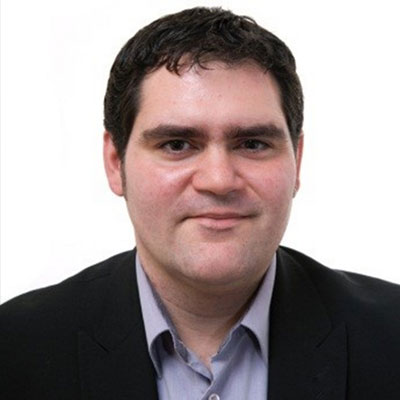
Dr. Amigo obtained his PhD (Cum Laude) in Chemistry from the Autonomous University of Barcelona, Spain. Since 2007, he has been employed at the Department of Food Science of the University of Copenhagen, Denmark and also as Guest Professor of the Federal University of Pernambuco, Brazil since 2017. Dr. Amigo’s research interests include NIR hyperspectral and multispectral image analysis in different research fields including Food production, pharmaceutical research, Forensic Sciences, etc. Moreover, he is involved in teaching Chemometrics with well-known PhD course such as Copenhagen School of Chemometrics. He has authored more than 140 publications (110+ peer-reviewed papers, books, book chapters, proceedings, etc.) and given more than 60 conferences and courses at international meetings. Dr. Amigo has supervised or is currently supervising several Masters, Post Docs and PhD students and he is an editorial board member of four scientific journals within Chemometrics, chemical imaging and analytical chemistry. In 2014, Dr. Amigo has receive the “Chemometrics and Intelligent Laboratory Systems Award” for his achievements in the field of Chemometrics. ICNIRS truly congratulates Jose for his achievement and as the winner of THA 2019.
2018 Tomas Hirschfeld Award

Christian Wolfgang Huck is doctor of natural sciences from the Institute of Analytical Chemistry and Radiochemistry, University Innsbruck, Austria in 1998. His academic carreer started in 1997 as assistant at the University Innsbruck. In 1999, he was lecturer at the advanced technical college for biotechnology, Management Center Innsbruck (MCI), Austria. In 2008, he was doing a research stay at the China Academy of Traditional Chinese Medicine, Beijing, China. Since 2015, he is full professor for analytical chemistry at the University of Innsbruck. He is also guest professor at Kwansei Gakuin University (Sanda, Hyogo, Japan). He has published more than 250 scientific publications describing new analytical attempts in vibrational spectroscopy (different modes of infrared and Raman) and separation science including mass spectrometry (LC, SPE, CE, CEC, -MS, MALDI) and is a named inventor of 14 issued international patents. He has received several international awards, including the Buchi NIR Award (2000). He is editor of Journals, amongst others, the Journal of Near Infrared Spectroscopy and NIR News.
2017 Tomas Hirschfeld Award
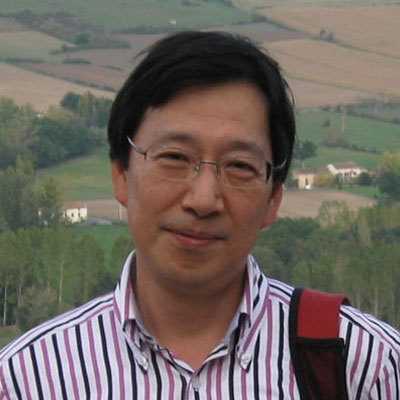
Satoru Tsuchikawa graduated from the School of Agriculture and the Graduate School of Agricultural Sciences, Nagoya University, Japan, in 1987 and 1989, respectively. His academic career started in 1990 as an Assistant Professor at Nagoya University. He earned a Ph.D. in Agricultural Sciences from Nagoya University in 1998. In 2004, he was Professor at Nagoya University. Since 2016, he is Vice Dean at the Graduate School of Bioagricultural Sciences, Nagoya University. His main research area is the application of NIR spectroscopy to wood and various agricultural products. He has been involved in this sort of studies for over 25 years, and published more than 100 papers. He has won several awards, including the Buchi NIR Award (2003) and the PerkinElmer Award (2003). He is secretary-general of Asian NIR Consortium (2013 -) and Japan NIR Consortium (2011 -).
2016 Tomas Hirschfeld Award

Jean-Michel Roger is Rural and Forestry Engineer from AgroParisTech french school. In 1995, he obtained his PhD in bioprocess sciences and he specialized in data processing and knowledge management. In 1998 he joined the team of Pr Véronique Bellon-Maurel who studied NIR spectrometry for agro-food products. He developed chemometrics methods for the design of embedded and hand held NIR sensors. He focused is research on the robustness problem. He has been stongly involved in many European projects dedicated to fruit quality assessment by NIR spectroscopy (SHIVA, VISHNU, GLOVE, ISAFRUIT). In 2003, simultaneously with Pr Tom Fearn, he proposed a new generic method called External Parameter Orthogonalization (EPO) which permits to eliminate specific spectral effects from the NIRS calibration and thus to solve certain problems of robustness. Some specific methods and applications were derived to address the problems of calibration transfer, drift compensation online,inter seasonal adjustment or compensation of the moisture effect for NIR based characterization of soil.
Jean-Michel Roger was also involved in the design of portable or online spectrometers using filters technology. This design requires to select the most relevant variables of the spectra. A lot of methods exist, but none are really suited to the case of multi responses NIR calibration. That is why he developed a method that responds to this problem (CovSel). This method has been extensively applied to set up waste sorting machines. Hundreds of these machines are now running worldwide.
Jean-Michel Roger is invested in the management of HelioSPIR, a French speaking society devoted to NIRS. He is vice president of this structure. He participates to the organization of the yearly conference of this society. He is invested in the management of the French Group of Chemometrics and participates to the organization of the yearly conference of this society. He was chairman of the CAC2008 Conference (Chemometrics in Analytical Chemistry), held in Montpellier, France. He was closely associated to the chair of the NIR2013 conference, held in La Grande Motte, France.
2015 Tomas Hirschfeld Award

Søren Balling Engelsen (SBE) is professor of Biospectroscopy and head of Spectroscopy & Chemometrics section in the Department of Food Science, Faculty of Science, University of Copenhagen. SBE holds an MSc in Chemical Engineering and a PhD (1992) in Molecular Modelling from the Technical University of Denmark on a Carlsberg Scholarship. During his PhD studies SBE spent one year in the group of John W. Brady at Cornell University (New York, US) and after the PhD degree he went for a three year Post-doctoral position with Professor Serge Perez at Institut National de la Recherche Agronomique (Nantes, France). In 1995 he became assistant professor in “Spectroscopy and Molecular Modelling” in the newly established research group of professor Lars Munck at Department of Food Science, The Royal Veterinary and Agricultural University, Denmark. In 2004 he became full professor in Plant Food Science. Since 2001 SBE has been the head of the Spectroscopy & Chemometrics research group comprising 45 persons. The section’s key competences cover a wide range of spectroscopic techniques and advanced chemometrics applied to industrial and academic research within food and health. The group is very active in disseminating chemometric and spectroscopy through multiple courses at the BSc, MSc, PhD and industrial levels. SBE has been pioneering the dissemination and use of quantitative spectroscopy to students at all levels. He was initiator and primary lecturer of the successful and still going strong Quantitative Food Spectroscopy course which introduced NIR spectroscopy and chemometrics to the university teaching portfolio at a time when NIR spectroscopy was not comme il faut in the academic environment. SBE has further supervised 37 MSc students and 29 PhD students.
The research of SBE is driven by the ambition of cutting-edge application of advanced spectroscopic techniques and SBE has systematically worked towards the elucidation of the complex multifactorial and mega-variate scene behind biology, including food. Whether the scientific methods are called quality control, metabolomics, foodomics or process analytical technology (PAT), they need to be tied together by comparative spectroscopy and multivariate data analysis (chemometrics), and ultimately with instrumental chemical reference analysis (for example GC-MS). SBE started developing NIR methods, always in collaboration with industry, for rapid quality control of different food quality traits such as water holding capacity in meat, texture of potatoes, frying oil deterioration, pectin functionality and barley phenomics. His background in vibrational spectroscopy made him focus on the interpretation of the spectral models and the advantage of using robust variable selection methods. This led to the interval PLS publication with Lars Nørgaard which demonstrates how simple variable selection can improve both interpretation and prediction performance of the calibration model. Spectral preprocessing is another import part of NIRS calibration and in close collaboration with professor Harald Martens SBE published two important papers on the use and detailed characterization of Extended multiplicative Scatter Correction and its inverse form , using gluten/starch mixtures and single wheat seeds, respectively. This work later led to a popular review of spectral pre-processing methods for NIR spectroscopy. In 2005 SBE made an early publication which almost has the character of a text-book example of NIRS-driven Process Analytical Technology. As forecasted by Tomas Hirschfeld in Science in 1984, Process Analytical Technology/Chemistry, with properly designed sensors such as NIRS sensors is a game changer for the industry, which can improve both product quality and earnings. Currently, SBE is working with PAT applications of NIRS including carcass grading in the meat processing industry, monitoring of water streams of reused water, NIRS phenomics of barley seeds and with the development of new NIRS instruments and applications cutting edge super-continuum lasers and fiber spectrometers.
In total SBE has authored/co-authored more than 180 peer reviewed scientific papers, 120 chapters and popular disseminations and 2 patents.
2014 Tomas Hirschfeld Award
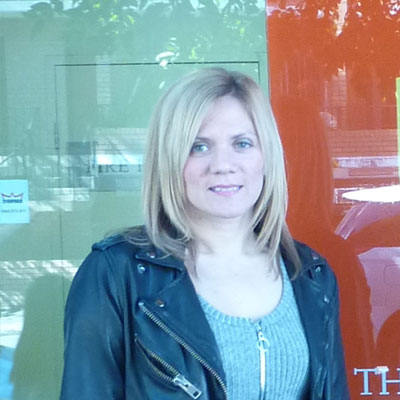
Dr. Lola Peréz-Marín, PhD in Agriculture Engineering (University of Córdoba, Spain). Since 1999, she serves as instructor and teacher in the Faculty of Agriculture and Forestry Engineering (ETSIAM, UCO). Currently, she holds the position of Senior Lecturer (full Professor accredited) in Livestock Production and in Non-destructive Spectral Sensors for Quality, Safety and Traceability of Agro-Food Products. She is Director of the Master Agri-Food Plants Projects and Management and vice-dean in her Faculty. Her NIRS researches began in 1999 at UCO, working later on in the topic of her thesis (awarded in 2006), concerned the optimization and implementation of NIR in the animal feed industry, focusing on the development and tuning of applications and algorithms for the analysis of unground compound feeds. One of the main topics of this research has been the study of different non-linear approaches on large spectral databases (thousands) to the difficult problem of measuring the ingredient composition in a complex mixture as the compound feeds. It must be highlighted that this research was developed with the support of different R+D projects together with national and multinational feed industry partners. . Since then, she has worked on an ever widening range of applications in food and agriculture − feed, fats and oils, meats, protein animal by-products, milk and dairy, and various fruits and vegetables − using NIRS, alone or combined with other sensors. Applications as the authentication of Iberian pig ham, olive oil categorization and the detection of banned ingredients in animal feeds are some examples.This research has resulted in well over 150 publications, with 72 of these being peer reviewed papers in top indexed quality journals, invited reviews and presentations at national and international conferences and workshops. She has experience in the participation, management and scientific co-ordination of several national and European R + D NIRS projects, and in technology transfer contracts with Spanish feed and food industries. She is member of the Council Management Committee (2013-2017) and of the Educational Group of ICNIRS, highlighting her participation in the educational project International Virtual Platform for Learning and Teaching of Near Infrared Spectroscopy (IVPTL-NIRS). In parallel, she has developed her academic career, with an intensive dedication to the training of undergraduate and postgraduate students. She has brought 6 PhD’s to completion, and is currently supervising 3 more. In addition, she has supervised 18 MsC thesis involving applications of NIR and teach in an annual course dedicated to NIRS beginning users (currently in the 14th edition). Dr Peréz Marín has served on the scientific committee of 6 international conferences, including NIR2003 in Córdoba and NIR2011 in Cape-Town.
In summary, these contributions cover the whole spectrum, from basic research to implementation and from the education of beginners through to the training of the next generation of researchers and professionals.
2013 Tomas Hirschfeld Award

Dr Daniel Cozzolino is currently a Research Fellow with the Barley Research Laboratory with The University of Adelaide, School of Agriculture, Food and Wine.
Daniel graduated from the Universidad de la Republica (Montevideo, Uruguay) as an Agricultural Engineer in 1989 and obtained his PhD from the University of Aberdeen (Aberdeen, Scotland) in 1998.
His research career has started in 1993 with the development of NIR applications for a wide range of agricultural products at the National Institute for Agricultural Research (INIA-Uruguay, “La Estanzuela” Experimental Research Station) before joined the Australian Wine Research Institute (AWRI) based in Adelaide (South Australia) in 2002. Between 2002 and 2011, he was the Senior Research Scientist and acting Team Leader of the Rapid Analytical Methods team at the AWRI. His principal role was investigating a wide range of applications using rapid analytical methods (Visible, NIR, MIR, UV, electronic noses) and chemometrics in the grape and wine industry, in collaboration with several academic and industry partners.
He has published more than 130 papers in refereed journals and 15 book chapters on the application of spectroscopy and chemometrics to a diverse range of agricultural products and commodities. He filed 1 patent on the non-destructive analysis of wine (in bottle analysis), currently commercialized by an Australian base company (http://www.jeffress.com.au).
In 2009 he became an Associate Research Scientist within the National Academy of Innovation and Science – Uruguay (www.anii.org.uy). He is also an Honorary Member of the Editorial Board of six International Journals (International Journal of Wine Research; CyTA – Journal of Food; Food Research International; The Open Spectroscopy Journal; The Journal of Omics; International Journal of Agricultural and Food Research). He has given several International and local presentations on the use of NIR and chemometrics to a wide audience (students, farmers, scientists). Daniel has supervised and co-supervised 3 Honors Thesis, 1 Master, 5 PhD Thesis and 3 Post Doc Thesis. He was member of the organizing committee of the Australian Near Infrared Group (ANISG) Conference held in Adelaide in April 2010.
2012 Tomas Hirschfeld Award
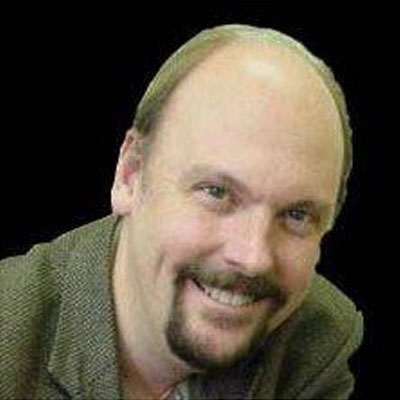
Dr. Burns was born in 1958 and received his B.Sc. (Chemistry/Mathematics) from the University of Puget Sound in 1979. He obtained his Ph.D. in Analytical Chemistry from the University of Washington in 1984. After an NIH post-doctoral fellowship in Bioengineering, he was appointed a Research Assistant Professor in Bioengineering at the University of Washington. He was promoted to Research Associate Professor in 1993. Later in 1993, he joined the Department of Chemistry and Experimental Medicine at McGill University. He is presently a Professor of Chemistry and Experimental Medicine. For six years (2002-2008) he served as Associate Dean (Research and Graduate Education) for the Faculty of Science. Professor Burns’ research is focussed on providing a fundamental understanding and tools for quantitative, spatially-resolved measurements in highly scattering media such as tissue. His work has received many prizes and recognitions. Likewise, his work has been featured in the popular press with reports in Nature, New Scientist, most national papers in Canada and the CBC. He has co-authored over 100 publications and 15 patents in the area.
2011 Tomas Hirschfeld Award

Marcelo Blanco Romia graduated in Chemistry at the Universidad de Barcelona and obtained the PhD degree in Sciences (Analytical Chemistry) in 1973. Since 1983 he is Senior Professor in Analytical Chemistry at the Faculty of Sciences of the Universitat Autònoma of Barcelona. Professor Blanco has over twenty years of experience on the application of Near Infrared spectroscopy in different fields, basically pharmaceuticals and chemistry but also petrochemical, textile industry, cement and leather products, among others. He leads the Applied Chemometrics Research group since 1986, where the most relevant topic has been the application of chemometric tools for the development of rapid analytical methods using molecular spectroscopic techniques. The main research matter in the pharmaceutical industry has been focused to the development of novel calibration models, capable to quantify both active ingredients and excipients, but also relevant physical parameters on different stages of a manufacturing process. This objective has been driven following the philosophy of Process Analytical Technology and Quality by Design (PAT & QbD).
Professor Blanco has scientific experience in the coordination of several Spanish R+D projects, in the foundation of novel basis on the application of NIR spectroscopy and the implementation of NIRS technology in different industries, such as pharmaceutical and chemical. Also, he has been participating in different chemometric projects (NIRS based) supported by the European Union. In 2007 he was honoured with the Analytical Chemistry prize of the Spanish Royal Society of Chemistry (Real Sociedad Española de Química).
He is the author of more than 200 publications in national and international journals and three chapters in NIRS books. He also has participate as organizer and teacher in a number of NIR training sessions focused to post-graduate students and professionals. Professor Blanco has mentored 20 Master thesis and 25 PhD dissertations, being more than half related to the NIR Spectroscopy.
2010 Tomas Hirschfeld Award

Jim Reeves received his B.S degree in Chemistry in 1970 from the University of Maryland (With Honors), his PhD in Biochemistry from the University of Maryland in 1975 and a B.S. degree in Computer Science in 1984 from the University College of the University of Maryland.
Jim has spent his entire career at the Agricultural Research Service of the US Department of Agriculture and started at the Beltsville Agricultural Research Center in 1978 working on the composition of ruminant feedstuffs. His introduction to near-infrared spectroscopy (NIRS) came in 1984 when he starting working with Dr. Timothy Blosser who using NIRS for forage and silage analysis. When Dr. Blosser left a few years later, Jim took over the NIRS work and continued studies on animal feedstuffs. While physically remaining at the same location, both the name of the lab (Ruminant Nutrition Laboratory) and direction of the laboratory changed gradually over a period of 15 years from ruminant feedstuffs to ruminant wastes and eventually to more generally ruminant effects on the environment (Presently the laboratory is the Environmental Management and Byproducts Utilization Laboratory). Thus, Jim’s research has moved from what the cow eats (front end) to waste production (the back end) to waste disposal (the soil). Jim is also presently part of the Hydrology and Remote Sensing Laboratory at Beltsville.
Jim has authored or co-authored over 125 peer reviewed publications, with thesis, book chapters, etc. increasing the total to nearly 200 non-abstract publications. He was the chairman of the 8th International Diffuse Reflectance Conference (Chambersburg, PA, 1996), is presently the North American Editor for NIR News, serves on the Editorial Boards of The Open Spectroscopy and Open Agriculture Journals and The Journal of Analytical and Applied Pyrolysis, has taught courses on NIR spectroscopy in the United States, Italy, Mexico and Brazil and routinely reviews spectroscopically (near- and/or mid-infrared) oriented papers on subjects ranging from pharmaceuticals and foods to animal feeds, hydrology, grains, soils and remote sensing.
Present research interests are concentrated in three main areas:
1. the application of spectroscopy for the rapid determination of soil composition. This includes the investigation and evaluation of both different spectral ranges (visible, near-infrared and mid-infrared), sample presentation methods (diffuse reflectance, fiber-optics, etc.) and spectroscopic methodology (proximate versus remote sensing) to find the most efficient and economically method for the rapid determination of soil carbon content for carbon sequestration.
2. Chemometrics, specifically transfer of methods developed by the NIRS community using bench top spectrometers to the area of remote sensing and also the development of more rapid methods for development and automatic evaluation of calibrations.
3. The development of methods for the evaluation of feedstocks for Biochar and biofuel production at the farm level. Finally, an ongoing interest throughout Jim’s career has been how the reference methods used in agriculture influence the spectroscopic calibrations upon which so much time is spent developing and upon which so much may depend, e.g. carbon credits for carbon sequestration as measured by remote or proximate spectroscopic methods.
2009 Tomas Hirschfeld Award

Dr. Sumio Kawano has worked for National Food Research Institute, National Agriculture and Food Research Organization, Tsukuba, Japan for 33 years since April 1975. He is now the head of the Nondestructive Evaluation Laboratory and the adjunct professor for University of Tsukuba. His responsibility in the institute is to establish the quality evaluation system for various kinds of food and agricultural products by using near infrared spectroscopy (NIRS). During his days as a Bachelor and Master student at Kyushu University, Sumio worked on visible spectroscopy and delayed light emission. Later, after moving to NFRI in 1975, he worked on food transportation engineering for 10 years, and that work granted him a doctor degree. In 1987, Sumio followed Dr. Mutsuo Iwamoto, the Father of NIRS in Asia, by becoming the head of the Nondestructive Evaluation Laboratory. His early work was the development of the Brix-NIRS measurement system for thin and thick peel fruit. Later, his achievements became the keystone of the well-known industrial scale Japanese NIRS sweetness sorting machine. At present, more than 2,000 units of the NIRS sweetness sorting machine are operating nation-wide. Beside the sweetness, in 1995, Sumio discovered the effect of sample temperature on the accuracy of NIR calibration and its relation to water absorption, the hot issue in NIRS research at present. During the beginning of the 21st century, Sumio and his team were among the first, if not the first, to develop a system to employ a portable NIR instrument for evaluating the quality of fruit in the field. At present, Sumio is still very active. He is professor at Kagoshima University and he is deeply involved as the Secretariat for both the Japan Council of NIRS (JCNIRS) and the Asian NIR Consortium.
2008 Tomas Hirschfeld Award
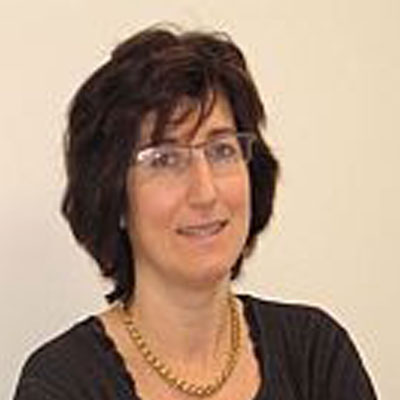
Professor Bellon-Maurel is currently Director of the Cemagref-SupAgro joint research laboratory entitled “Information and Technologies for Agro-processes” which employs 50 people and also holds a chair in the Faculty of Agriculture (Montpellier SupAgro), Montpellier. Véronique started to work on NIR spectroscopy in 1988 when she began work for her PhD thesis in Cemagref. Her goal then was to develop optical sensors to facilitate the measurement of quality, specifically sugar content, in intact fruit on-line. As part of this work, she studied the design and multiplexing of NIR spectrometers and gained experience in fibre optic coupling during a stay at the French nuclear energy agency. Since then, Professor Bellon-Maurel’s main interest has always been the conception and creation of innovative instruments and operation for NIR spectroscopy and imaging applications. With this focus, she has contributed to several European projects such as CAMAR (1992-1994) which studied the use of NIR spectrometry for non-destructive measurement of sugar content in several commodities, SHIVA (1994-1997) which implemented NIR spectrometry on a robot for sorting fruit, and ASTEQ (1998-2001), a concerted action about various techniques for measuring fruit quality in which NIR spectrometry and NIR imaging were studied. In 1998-2001, her group coordinated the GLOVE European project, in which the challenge was to miniaturize and integrate a NIR spectrometric device in a glove (with other sensors) to measure fruit quality. A prototype was designed and is under development with a company. When not involved in these projects, publishing extensively or teaching, Véronique initiated the French NIR users group Heliospir (www.heliospir.free.fr) and has hosted many visiting NIR researchers to her laboratory.
Updated : 3 May 2023
